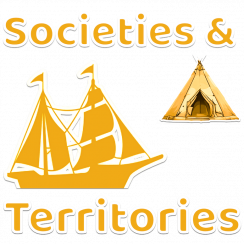“prairie” or “Prairies”?
Close your eyes and imagine a prairie. What do you see? A flat, grass-covered landscape that stretches as far as the eye can see? Perhaps some grazing cows, endless wheat fields or even roaming bison? Some of the words typically used to describe a prairie include grassy, vast, rolling, wide, fertile and green. Does this help you better imagine it? The words meadow and prairie are synonyms.
Now, when we talk about the Prairies with a capital “P”, we’re talking about something a little different; in this instance we’re referring to three Canadian provinces: Manitoba, Saskatchewan and Alberta. Take a close look at where these three provinces are located on the map of Canada: They are the centre of the country, between British Columbia to the west and Ontario to the east. To the south are the United States and the Northwest Territories are to the north.
By 1905, the Prairies were undergoing rapid development. There were still few inhabitants on this vast territory, but this would soon change. This was very different from what was happening in the St. Lawrence Lowlands in Québec, a region that at the time was already developed, urbanized and industrialized.
Manitoba became a Canadian province in 1870, but its territory was smaller than it is today. Because it was only a small square of land to the north of the U.S. border, it was called the “postage stamp province.” Saskatchewan and Alberta, meanwhile, would be created only in 1905.
Wondering what the prairie we mentioned in the first paragraph has to do with the Canadian Prairies? Read the section, Rich soil and find out.
Author: Service national du Récit de l’univers social




